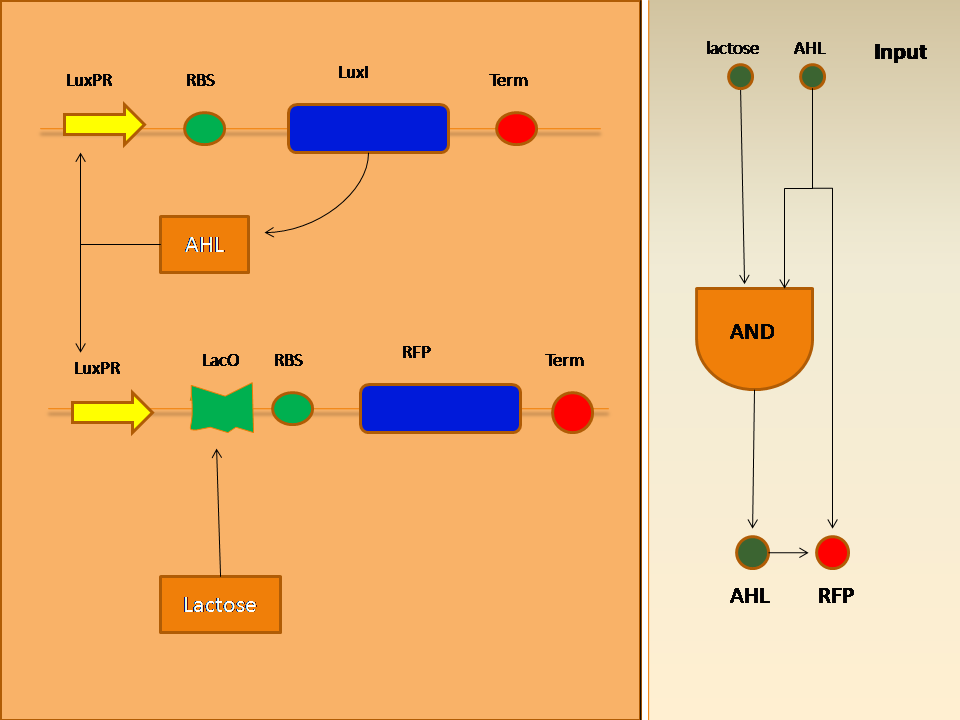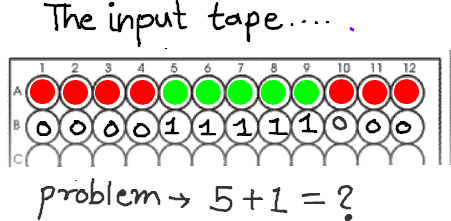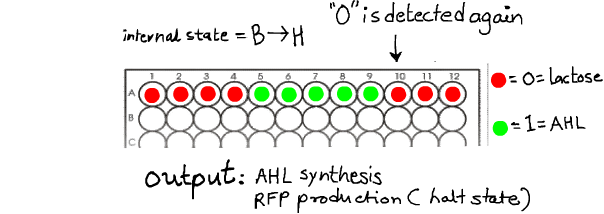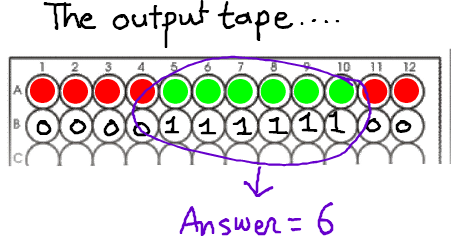Team:IBB Pune/construct
From 2009.igem.org

- Home
- Team
- Project
Summary Details Results Modeling
- Related
- Safety
- Parts
- Notebook
The Simplified Construct
Working
The Turing Machine begins with the default state 'A'.In this state it encounters a '0' (represented by Lactose) first. In this state, the LuxR protein will be constitutively produced. The LacO (to which repressor protein remains bound in the normal state) becomes activated in presence of Lactose. However this does not lead to the expression of the reporter gene as this requires activation of the pLuxR promoter (requiring AHL). Thus the Turing Machine remains in state 'A', leaves the '0' unchanged and moves one step to the RIGHT.
This process is continues till the Turing Machine reaches the first '1' on the tape, (represented by 'AHL' (acyl homoserine lactone) ). This induces the pLuxR promoter to be switched 'on'. This occurs via the interaction of 'AHL-pLuxR' complex which activates the pLuxR promoter to express the LuxI gene. LuxI gene is responsible for the production of the enzyme Homoserine Lactone Synthase (an enzyme which produces AHL). This is regulated by a positive feedback loop. The AHL which is synthesized by the cells keeps the pLuxR active thus enabling the production of even more AHL. This also has the capacity to activate the other pLuxR promoter present in cassette 2. However in ABSENCE of Lactose, the LacO site has repressor protein bound to it. This prevents the transcription of the reporter gene. The overall effect of this module is that, the Turing Machine enters state 'B', it leaves the '1' unchanged and again moves RIGHT.
This process keeps repeating until the Turing Machine reaches a zero again.
In this case, the Turing Machine is in State 'B' and it encounters a '0'. According to the specification of the Turing machine, the machine changes this '0' to a '1' and HALTS. In physical terms, this is obtained by depletion of Lactose and the production of AHL. This is achieved in the following manner:
When the Turing Machine encounters Lactose ('0') the repressor protein is released from the LacO site. This enables the pLuxR promoter to be activated by the AHL-LuxR complex. This enables the expression of AHL (turning the state '0' into '1') and also enables the expression of the reporter gene (RFP). This signals that the Turing machine has halted.The overall result of this process is that the Turing Machine adds +1 to a string of 11111's as is required by the specification of the Turing Machine.
How does Simplification Help?
By reducing the number of proteins required to 2 LuxI and LuxR, we drastically reduce the complexity of the system design. Our simplified constructs enable us to phenotypically mimic the behaviour of a Turing Machine Unary Adder.
Retrieved from "http://2009.igem.org/Team:IBB_Pune/construct"
 "
"






